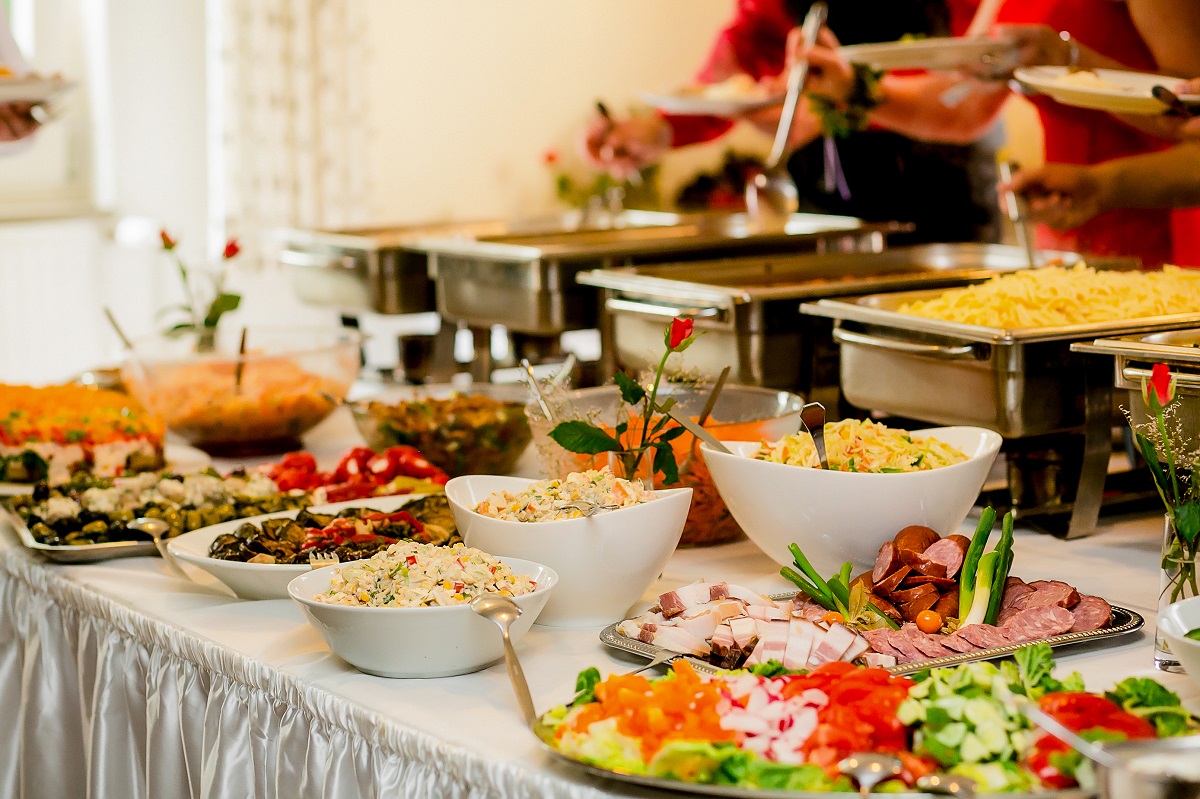
Buffet tables are an excellent way to feed a large number of people with less effort than serving them by plate. Because customers or guests are serving themselves, whoever is running the buffet won’t need to hire waitstaff to take orders and ferry them from the kitchen. Unless there’s a specialty required, the food can be prepared off-site and placed in bain-maries until it’s time to eat.
But how do all-you-can-eat restaurants and other similar ventures nudge their profits higher through buffets? The secret lies in strategic planning. Laying out a cost-effective buffet is like preparing for a battle. Like a good general, a buffet battle planner has to consider their troop compositions and tactical positioning.
Troop Composition
The troops when planning a buffet table are the food. The trick is to provide diners with quality food in satisfying quantities. This is where cheap but plentiful food comes in. Carbohydrates, like steamed rice and dinner rolls, are a great way to give customers full bellies while keeping the cost down. Side dishes of less pricey produce, like corn and mixed vegetables, are also very welcome on buffet tables. For more expensive food items, like beef and pork, buffets find sources that provide quality ingredients at cheaper prices. The meat is then served in smaller cuts and portions to influence how much a hungry guest will take.
Buffets can provide delightful but affordable delicacies by using seasonal produce. Because these fruits and vegetables are cheaper in certain months, buffet tables can have lots of dishes made from them during this time.
Beverages are another way buffets can cut costs. Either they can charge a higher price for drinks or they can make cheap beverages ,like soda, freely available, making it easy for diners to get full from fizzy drinks. There are businesses that specialise in providing hotels and caterers solutions for their juice machine and beverage needs.
Tactical Positioning

Good troops also need great positions to win battles. Because diners tend to take larger servings at the beginning, carbs and other filling foods are at the head of the buffet table. The cheaper fare, like vegetables and side dishes, follow them down the line. More expensive items in smaller quantities are located near the end of the table when people’s plates tend to be too full for them to take more than one piece, if at all.
The size of the serving dish also affects how big portion diners take. That’s why buffets serve heavy food in large trays and costlier items in small plates.
It’s also important to limit the amount of food that the guests can take, so buffets usually provide smaller soup bowls and dinner plates. They can also control the number of utensils that are available to diners for a similar effect on consumption.
With buffets, every meal time is a battle. In order to win an event, organisers or restaurateurs must be able to turn a profit and provide excellent food to their customers. Without a proper balance between these two goals, the business could have a hard time prospering. As Sun Tzu writes in ‘The Art of War’, the best way to win a war is ‘to subdue the enemy without fighting’. What better way to do that than with good food?

